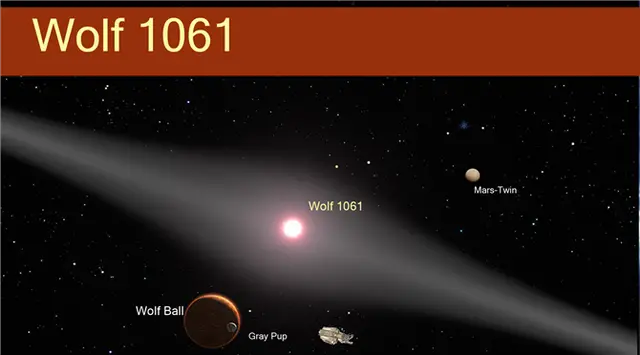Aussie astronomers have found the closest potentially habitable planet that's four times the size of earth just outside our solar system.
Small rocky planets and multi- planet systems are known to be abundant in our galaxy, however most of the rocky exoplanets discovered so far are hundreds or thousands of light years away, with the exception of Gliese 667Cc that's 22 light years away.
Astronomers from the University of New South Wales on Thursday revealed they have found three planets orbiting a red dwarf star 14 light years away called Wolf 1061 that's cooler than the star Earth orbits around.
"It is fascinating to look out at the vastness of space and think a star so very close to us - a near neighbour- could host a habitable planet," they study's lead author Dr Duncan Wright said.
Of the three planets, one is too close to be habitable, the other falls just outside the outer boundary to be habitable, while the middle might be "just right" to sustain life.
"It is a particularly exciting find because all three planets are of low enough mass to be potentially rocky and have a solid surface, and the middle planet, Wolf 1061c, sits within the ' Goldilocks' zone where it might be possible for liquid water - and maybe even life -- to exist," Wright said.
The planets orbit the small, relatively cool and stable red dwarf "M-type" star about every 5, 18 and 67 days, with masses of 1.4, 4.3 and 5.2 times the size of Earth, respectively.
The study, to be published in The Astrophysical Journal Letters, made the observations using a new technique to analyze data from the "precise, purpose built planet-hunting" HARPS spectrograph at the European Southern Observatory's 3.6 meter telescope in Chile, Professor Chris Tinney, head of the Exoplanetary Science at UNSW group, said.
The astronomers will now further observe Wolf 1061 and search for "transits" of the planets in front of the star, allowing the researchers to find out more about the planetary system.
"The close proximity of the planets around Wolf 1061 means there is a good chance these planets may pass across the face of the star. If they do, then it may be possible to study the atmospheres of these planets in future to see whether they would be conducive to life," team member Rob Wittenmyer said.
 简体中文
简体中文

